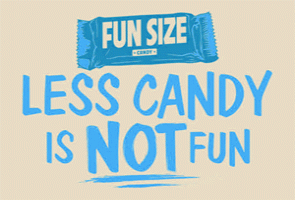You’ve heard us say it a million times – less is more when it comes to solid copy. (Like in this post about getting better website writing results. Or in this one about the benefits of visual content.) But, as with any rule, there are exceptions. And, like my high school graphics instructor taught us, you have to know the rules to know how to break them.
Does Your Copywriting Company Know the Rules?
Rules, schmules. Copywriting is a bit of the Wild West – and let’s be honest: It’s more fun that way! Kind of like how with copywriting, we get creative license to, well, be creative. Make up words, use sentence fragments, play with consonants and alliteration. Defy grammar (to some extent, anyway). These are all part of what makes this copywriting company, for one, love copywriting!
That’s where we come in.
However, there are some rules that are just there to stay:
Avoid useless connectors. “As well as,” “and also,” passive voice, and misused and misplaced “of” connectors are all too easy to abuse. And they add unnecessary words to the word counts. Not to mention making the copy just plain sloppy. Avoid them. Sure, sometimes you need to add a bit more to a sentence, but 90 times out of 100, “as well as” is not the way to do it.
Know what you’re trying to say. Overexplaining something is just another way of showing that you don’t really know what you’re talking about. A copywriting company that consistently turns out longwinded results most likely doesn’t understand exactly what you’re selling. The best way to cut the copy? Know what the main message is and understand how to accomplish it.
Write for the space you have. No copywriting company should unleash its copywriter without lines to color in. Not only does a lack of parameters increase the cost through excessive word counts, but it opens copy up to a lack of focus and efficiency. Copywriters have a tendency to write what they want to write; make sure they know the approximate number of words and have a visual of the space they can fill. This helps them to “stay within the lines.”
Have fun. A bit of an oxymoron, sure. After all, by definition doesn’t having a rule to have fun remove some of the fun? But it’s just true – copywriting should be fun. Copywriters get to play with words, be creative, and, at the heart of it, make things up. Sounds like a nightmare to some, but to a copywriting company, it’s just about as good as it gets. It’s, dare we say it, fun.
Breaking the Rules
There are plenty of rules for great copywriting, but that “know what you’re trying to say” rule is like the cardinal rule of copywriting – and your copywriting company better know and live by it. In most cases, shorter is better – particularly if you’re working with print space. But in the digital world especially, things can get a bit gray – so how do you know when and how to break the rules?
Websites
Website writing is always a bit of a tricky beast. After all, there’s so much that the client wants to convey and – technically – unlimited space, but the line lies in how much the client is reasonably willing to read. Not to mention things like branding, defined tone, and the like. We personally still subscribe to the less is more rule in most cases, but do bend the rule a bit when it comes to things like appropriately lengthy lists of services, numbered lists of recommendations, or step-by-step instructions. However, in general, try to keep things concise – particularly on homepages – and remember that your Web copy is a sales tool and not necessarily a full listing of everything that you do on one page.
Digital Advertising
Digital advertising can, depending on technical abilities, offer some creative options for extending copy. For example, a rotating banner or flash component might offer “two pages” instead of the “one” that a static ad offers. If something like this is available, obviously you have more room to play with – but that doesn’t mean that you don’t have to be strategic or consider word counts. Remember that more panels is not always better – and that if you do use multiples, they should not necessarily be multiple independent pieces but instead play off of one another.
Printed Collateral
When it comes to things like fliers, brochures, or other printed materials, it’s typically best not to mess with the rules too much. Designers have developed a careful balance of white space, graphics, and copy blocks – respect that. Adding too much copy will either ruin that balance or cause you to use such small font sizes that no one really can read it. Find a way to deliver one specific key message.
Your copywriting company likely has this down to a science – it should, anyway! And, as we’ve found, when you’re too close to a message or product, it’s hard to pare down everything that you want to say into exactly what the reader needs to understand. This is yet another benefit of using a copywriting company to develop your messages.
That said, learning how to bend the rules to get better results – and better copy – mostly comes down to perfecting and honing your copywriting skills. Learning to develop stronger messages in fewer words truly is an art – and one that changes with every client and every project.
What are your thoughts on copywriting strategy? Is more less in your book, or do you prefer to bend the rules? Let us know your thoughts!
